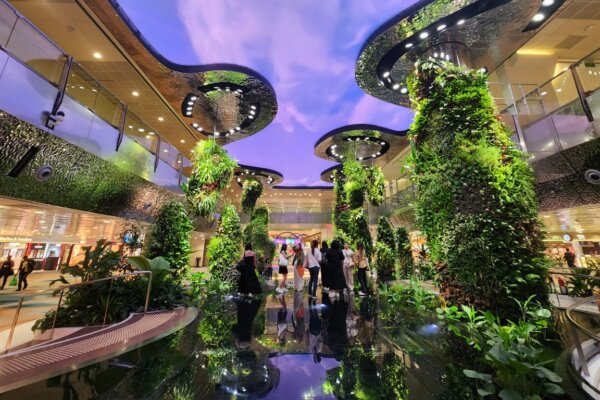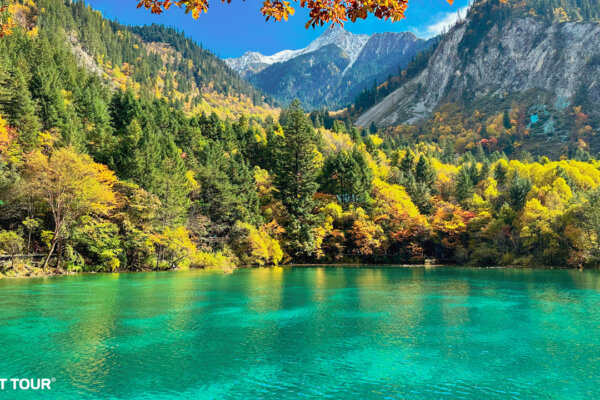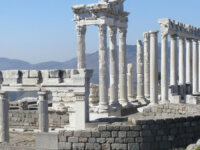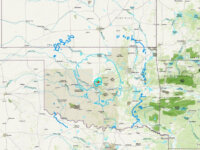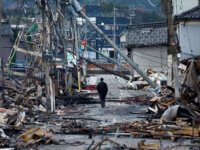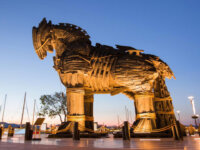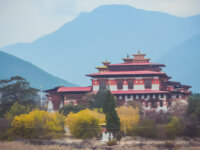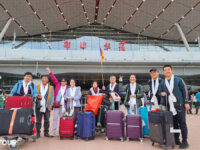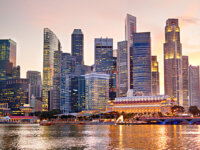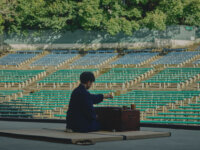SINGAPORE – Singapore is renowned as one of the most beautiful and cleanest countries in the world. This sovereign city-state takes the shape of a diamond and is comprised of 63 different islands, both large and small.
Despite its relatively modest size, Singapore has excelled to become a leading hub in Asia and is often referred to as the “Asian Dragon.” With its bustling and immaculate commercial districts, Singapore consistently ranks as an ideal destination for travelers. Join Traveloka on an exploration of the Singapore travel experience for a high-quality trip!
Introduction to Singapore
Situated off the southern tip of the Malaysian Peninsula, Singapore is located 137 kilometers north of the equator and is connected to the Johor Strait. To the south, Singapore shares waters with the Riau Archipelago, an island chain of Indonesia that intersects the Singapore Strait.
The name “Singapore” is derived from the Malay words “Singa” (lion) and “Pura” (city). Hence, Singapore is often referred to as the “Lion City.”
When is the Best Time to Travel to Singapore?
Located near the equator with a hot and humid tropical climate, Singapore makes it easy for travelers to adapt to its weather throughout the year. The temperature in Singapore typically ranges from 23 to 31°C and is enveloped by the region’s renowned clean and fresh air. Additionally, Singapore is known as a green island city, so visitors always experience comfort with the integration of greenery into modern public structures.

Singapore is a stunning and prosperous island nation, ranking among the top 4 “Asian dragons.”
So, when is the best time to travel to Singapore? Each season in Singapore holds its unique appeal to attract travelers. In the spring, from February to April, the Lion City offers pleasant and cool weather with various activities and vibrant cultural festivals like the Spring Festival, lion dances during the Lunar New Year, and the annual food festival in April. Summer is the peak tourist season with bustling amusement parks and activities. This is also when temperatures can soar up to 35°C, so it’s advisable to prepare sun protection and hats for outdoor exploration.
From November to January, Singapore experiences its annual rainy season, but these are usually brief and sporadic showers, so you don’t need to worry too much; you can still enjoy the cool and pleasant weather. An interesting tidbit for shopping enthusiasts is that you can stride through this famous Southeast Asian travel destination in June and July for mid-year sales or in December for the grand year-end sales event.
What to pack for a trip to Singapore?
Necessary Documents
Similar to other foreign travel destinations, you need to have essential documents for your trip to Singapore, such as:
- A passport with at least 6 months of validity before your departure.
- Currency exchanged to Singapore Dollars (SGD).
- Other documents like flight tickets, hotel reservation information, and your travel itinerary.
It’s also a good idea to make photocopies of your identification and passport to have a backup in case your belongings are lost or stolen, and you need to contact your embassy for assistance.
Additionally, make sure to review the entry procedures for Singapore for a smoother experience.
Singaporean Currency
The official currency of Singapore is the Singapore Dollar (SGD), and it comes in both banknotes and coins.
The exchange rate is approximately 1 US Dollar = 1.36 SGD (as of October 2023 and subject to change according to the current exchange rate).
When traveling to Singapore independently, it’s recommended to exchange some Singapore Dollars before your trip, including both banknotes and a few coins for transport fares.

Preparing Your Luggage for an Amazing Trip to Singapore
Luggage for Your Trip
What do you need to prepare for a trip to Singapore? You should pack various essentials, including clothing, footwear, a hat, sunscreen, sunglasses, medications, phone charger, a 4G SIM card, etc. Moreover, consider bringing a universal power adapter as Singapore typically uses 3-pin plug sockets.
Keep an eye on the weather forecast and pack accordingly for Singapore’s climate. Additionally, don’t forget to have some modest and formal attire to wear when visiting temples or sacred places to ensure your Singapore travel wardrobe is appropriate.
Weather When Traveling to Singapore
Singapore experiences a hot climate as it is located in the equatorial region. Therefore, dressing comfortably is essential. Here are some personal items to bring along:
- Hat or Cap: A wide-brimmed hat or cap, especially for women, is recommended.
- Hand Fan or Handheld Fan: The weather can get extremely hot, so it’s handy to have a fan for outdoor activities when there’s no natural breeze.
- Wet and Dry Towels: Keeping yourself cool and dry is important, so bring both wet and dry towels.
- Water: Stay hydrated by carrying small bottles of water for convenience.
- Comfortable Sneakers: Since you’ll likely use public transportation frequently in many developed countries, having a good pair of sneakers is essential for walking.
- Raincoat or Small Umbrella: As Singapore has an equatorial climate, rain can occur at any time. It’s better to be prepared with a raincoat or small umbrella to avoid the cost of buying expensive “foreign brand” rain gear.
- Power Adapter: Singapore uses 3-pin plug sockets, so you might need a power adapter for your electronic devices.
- Power Strip: If you’re traveling in a group, consider bringing a multi-outlet power strip to accommodate multiple devices like phones and cameras.

The Singaporean Sky at Sunset – Source: Collected
Emergency Phone Numbers
- Fire/Ambulance: +65 995
- Police: +65 999
- 24-hour Emergency Road Service: +656 748 9911
- City Cab Taxi: +656 552 2222
- NTUC Comfort Taxi: +656 552 1111
- TIBS Taxi: +656 481 1211
Entry Requirements for Foreign Visitors Traveling to Singapore
When traveling to Singapore, foreign visitors need to adhere to the specific entry requirements of the country. Here is some important information about entry requirements:
- Passport: You must have a valid passport with at least 6 months of remaining validity from your intended departure date from Singapore.
- Visa: Visa requirements depend on your nationality. Citizens of many countries are eligible for visa-free entry into Singapore for a specified period. You should check if you need a visa and, if required, apply for it before arriving in Singapore.
- Duration of Stay: The specific duration of your stay is determined by your visa or entry permit. It’s essential to adhere to the authorized period and not overstay.
- Health Conditions: Due to the COVID-19 pandemic, there may be requirements for testing and quarantine. Check the latest health and safety requirements of Singapore before your trip.
- Contact Information: Carry important contact information, including your accommodation address, mobile phone number, and other essential documents.
- Financial Verification: In some cases, you may be asked to provide financial evidence to demonstrate your ability to cover your expenses during your stay.
Always check the website of the Singaporean Embassy or Consulate or contact them directly for specific entry requirements based on your nationality and the purpose of your visit. This ensures that you comply with all regulations when traveling to Singapore.
Transportation in Singapore
Singapore boasts a top-notch public transportation system, making it incredibly convenient to get around. Here are several flexible options for moving around in the city:
MRT (Mass Rapid Transit): Meeting the criteria of being fast, compact, and affordable, Singapore’s modern subway system, known as MRT, is a popular choice. With an extensive network of MRT lines covering the entire country, it’s conveniently located near public attractions. It’s not only favored by locals but also highly accessible for independent travelers, helping save significant costs. If you don’t plan to travel too much, you can purchase single MRT tickets. For longer stays or daily commuting, consider getting the EZ Link card, priced at $12, which can be bought at MRT stations.

The Mass Rapid Transit (MRT) is the most popular public transportation in Singapore.
Buses: Another widely used mode of public transportation in Singapore is buses. They operate from 5:30 AM to midnight, and there are also extended night services like Night Owl and Night Rider at slightly higher fares. Buses are a cost-effective way of getting around, and bus stops are conveniently located throughout the city, providing flexibility and convenience.
Taxis: Taxis in Singapore are relatively expensive. Particularly during peak hours or holidays, fares increase by 25%. Late-night taxi rides (between 12 AM and 6 AM) incur a 50% surcharge. Unlike many countries, you cannot flag down a taxi on the street; instead, you should head to designated taxi stands for pick-up. In addition to traditional taxis, you can use ride-hailing services like Grab, which also follow pricing based on demand and locations, similar to regular taxis.
Where to Stay in Singapore
As a highly developed hub for tourism, Singapore offers a diverse range of hotel accommodations to suit various budgets. Prices can vary depending on factors such as location (proximity to the city center, transportation hubs, etc.), hotel standards (spacious rooms, beautiful views, comfort, excellent service, etc.), and nearby amenities (close to entertainment districts, dining, shopping, etc.).
Konhar has compiled general information about different areas to help you choose based on your travel goals and preferences.
| Price | Location | Characteristic |
|---|---|---|
| High-class | Marina Bay | Located in the heart of Singapore, Marina Bay is home to a plethora of renowned Singaporean tourist attractions such as Gardens by the Bay, the ArtScience Museum, and the iconic Merlion statue. |
| Orchard Road District |
|
|
| Sentosa Island |
|
|
| Civic District |
|
|
| Intermediate level | Little India |
|
| Affordable | Clarke Quay | Features a concentration of restaurants and bars. It’s a hub for parties and entertainment, suitable for group travelers. |
| Kampong Glam District |
|
|
| Chinatown District |
|

Clarke Quay is renowned for its vibrant atmosphere and colorful streets.
Must-Visit Destinations
One of the most crucial aspects of a trip is the choice of destinations. It’s safe to say that, despite its modest size, Singapore is the ultimate entertainment paradise in Southeast Asia. Regardless of your preferences, whether it’s dining, shopping, leisure, or just a brief visit, even if you’re on a 3-day, 2-night trip to Singapore, the Lion City can cater to every traveler. Here’s a list of must-visit places when traveling to Singapore:
Jewel Changi Complex – Changi International Airport
As soon as you arrive in Singapore, you’ll be welcomed by the stunning sight of The Rain Vortex at Changi International Airport, the world’s tallest indoor waterfall cascading down artistically. This is the iconic check-in backdrop for travel enthusiasts setting foot on the Lion City. Moreover, if you visit the Jewel Changi complex in the evening, you can witness a mesmerizing water and light show with dazzling effects.

Changi International Airport consistently ranks as one of the most beautiful airports in the world.
Covering a vast area of 135,700 square meters, with five basement levels and five above-ground levels, Jewel Changi is a vast and modern complex, a key factor that has helped Changi International Airport maintain its reputation as the world’s best airport for many consecutive years. Inside this complex, you’ll find various attractions, a bustling shopping district, and premium restaurants that will leave you amazed from the moment you step foot in Singapore.
Gardens by The Bay
One of the must-visit attractions in Singapore is undoubtedly Gardens by The Bay, a 101-hectare garden complex situated by Marina Bay, featuring an astonishing fusion of architecture and nature. Comprising three main gardens: the Bay East Garden, the Bay Central Garden, and the Bay South Garden, Gardens by The Bay attracts millions of visitors every year. Among them, the “Supertree Grove,” with its 42-meter-tall man-made tree-like structures, is surrounded by a lush landscape of ferns, orchids, bromeliads, and hibiscus. Combined with the continuous cascading of the 35-meter-tall waterfall, the scenery comes alive as if you were standing in a fairyland.

The towering trees are a unique highlight of Gardens by The Bay.
Merlion Park
The iconic Merlion statue, a half-lion, half-fish mythical creature, has long been a legendary symbol of Singapore. It’s also the unmistakable check-in spot to identify the Lion City. Standing at 8.7 meters tall and weighing 70 tons, the Merlion statue spouts a stream of water from its mouth in the direction of Marina Bay, creating a stunning backdrop for any photograph. Merlion Park is open to visitors free of charge. Surrounding the park, there are numerous souvenir stalls and eateries where tourists can enjoy a meal while soaking in the fresh air.

The Merlion statue – a legendary check-in spot in the Lion City.
Marina Bay Sands
A testament to Singapore’s vibrant development, Marina Bay is a cultural, tourist, and entertainment hub with impressive architectural structures. It would be a huge oversight not to mention the Marina Bay Sands complex. It is the largest integrated luxury entertainment complex in the Lion City, built on a 15.5-hectare land. Marina Bay Sands consists of three 55-story towers that support a rooftop designed in the shape of a cruise ship. Here, visitors can experience a 5-star hotel stay, modern-world-class casino entertainment, shopping at an extravagant shopping center with 300 different stores, or chill with panoramic views of Singapore at the Marina Bay Sands Skypark.

The Marina Bay Sands building is one of the epitomes of luxury.
Orchard Road
Orchard Road is unquestionably the liveliest shopping paradise in Singapore. With a total road length of 2.2 kilometers and an expanse of 800,000 square meters, Orchard Road is divided into various districts, each offering a unique shopping experience. The Tanglin district boasts long-standing shopping centers specializing in arts and crafts, rugs, folk paintings, wedding attire, and family items. In the Scotts district, you’ll find cosmetics and trendy fashion for the younger crowd. The Delfi Orchard district features a plethora of unique jewelry and souvenir shops.

Orchard Road comes to life at night, and it’s buzzing with activity. @Accor
Moreover, visiting Orchard Road in mid-June, July, Black Friday, or the Christmas season in November and December allows you to enjoy fantastic sales with numerous brands offering discounts of up to 70%. These periods also bring Orchard Road to life, making it the busiest and most illuminated time of the year.
Sentosa Island
When in Singapore, you must experience the entertainment hub on Sentosa Island, the largest island in the country, featuring 70% lush tropical rainforests and 30% captivating architecture.

Universal Studios Singapore on Sentosa Island – A Wonderland of Fun
The main attraction on Sentosa is undoubtedly Universal Studios Singapore. With 7 themed zones, including Hollywood, Madagascar, Far Far Away, The Lost World, Ancient Egypt, Sci-Fi City, and New York, visitors are immersed in a world of exciting fantasies. Sentosa Island is also renowned for the S.E.A Aquarium, the world’s largest aquarium housing over 100,000 rare marine species and 20,000 vibrant coral species. Additionally, the “Wings of Time” water show, the Skyline Luge and Skyride, Mega Adventure Park, and more are highlights not to be missed on the island.

S.E.A Aquarium – One of the World’s Largest Oceanariums
Civic District
The Civic District in Singapore is a historical and cultural heartland that houses some of the city-state’s most iconic landmarks and institutions. This area is known for its rich history, architectural heritage, and significant cultural sites.
It contains historical buildings and museums such as The Arts House (the former Parliament House), National Gallery Singapore (consisting of the Old Supreme Court Building and former City Hall), National Museum of Singapore (the former Raffles Library and Museum), and Asian Civilisations Museum (the former Empress Place Building). It also includes the memorials such as the Civilian War Memorial, Lim Bo Seng Memorial and The Cenotaph. Other institutions within the district includes Parliament House, Esplanade, Fort Canning, Supreme Court Building, Raffles City, and the City Hall MRT station.
Little India
A colorful adventure known as Little India brings immense delight to all of us. This place awakens all the senses of those who visit, with its overflowing images, sounds, spaces, scents, and flavors of India, as it is home to a large population of people from the Indian subcontinent in Singapore. The street-side stalls look fascinating with various vegetables, goods, souvenirs, fabrics, and more. Little India truly has a unique flavor and is a place with a distinctive culture that is an integral part of Singapore, worth visiting at least once.

Little India – Source: Collected
Clarke Quay
Clarke Quay is a riverside quay along the Singapore River, connected to North Boat Quay via the Read Bridge. It is one of the liveliest and most vibrant entertainment destinations in Singapore, especially at night. Located within the Singapore River Planning Area, it offers a plethora of restaurants, eateries, and also serves as a historic port on the island.
What makes Clarke Quay so appealing is its bustling, energetic atmosphere that comes alive after dark. The various shops, bars, and pubs along the riverbanks open their doors to visitors with lively music and entertainment, attracting a diverse crowd, particularly young adults.
Kampong Glam District
Kampong Glam, in the local language, means “Charming Village.” The Kampong Glam district exudes traditional charm with a touch of elegance. It can be said that any traveler visiting Singapore will be captivated by the beauty of this historic neighborhood.
When exploring Kampong Glam, visitors will also have the opportunity to visit the Masjid Sultan, the most important mosque in Singapore. The Masjid Sultan was initially built in 1826 and underwent extensive reconstruction, finally being completed in 1928.
With its golden-domed roof and spacious prayer hall, the Sultan Mosque is considered a highly renowned tourist attraction in Kampong Glam. The mosque serves as a focal point for the Muslim community in Singapore. Visitors are expected to dress appropriately or use provided robes when entering the mosque.
Chinatown
When we mention Chinatown, we’re referring to the bustling street market area known for its characteristic Chinese businesses. With over 200 stalls lining streets like Sago, Pagoda, and Trengganu, Chinatown is sure to delight you with its diverse merchandise and a plethora of enticing street food. It is also home to the famous Buddha Tooth Relic Temple, built in the architectural style of the Tang Dynasty. The temple’s name is associated with the belief in preserving a relic (a tooth) of the Buddha.

The Buddha Tooth Relic Temple in Chinatown is also known as the Tooth Relic Temple.
Chinatown is also home to various temples symbolizing different faiths in the region, such as the Sri Mariamman Temple, the oldest Hindu temple in Singapore, Wak Hai Cheng Bio Taoist Temple, and Thian Hock Keng Temple dedicated to the Goddess of the Sea, Mazu. Additionally, you can explore the Singapore City Gallery, where detailed architectural models provide insight into the early city planning of Singapore through the art of urban geography.
Night Safari Singapore
Night Safari Singapore is the world’s first and only nocturnal zoo. It houses and conserves 1,000 animals from 120 different species, with up to 30% of them being rare and endangered species on the brink of extinction. When you step into this animal kingdom, you’ll witness extraordinary animal performances, where the “artists” are the animals themselves. Immersing yourself in the wild, exploring vibrant nocturnal life as the night falls over the rainforest, will undoubtedly leave every visitor thrilled.
Fort Canning Park
Situated as an oasis in the heart of the bustling city, Fort Canning serves as a historical landmark. It is where Sultan Iskandar Shah, the last king of the Kingdom of Singapore, had his shrine, and it’s also the land where the British Army constructed numerous forts and architectural marvels. At Fort Canning, visitors can take a leisurely stroll and explore historical relics to gain a deeper understanding of Singapore’s illustrious history. For nature enthusiasts, don’t forget to visit the Spice Garden and the ASEAN Sculpture Garden, where you can sit on lush green lawns and fully immerse yourself in the tranquil and verdant ambiance of Fort Canning.

The iconic “Stairway to Heaven” photo spot at Fort Canning.
ArtScience Museum
Resembling a blossoming lotus flower along the Marina Bay waterfront, the ArtScience Museum in Singapore covers a total area of 4,650 square meters. It showcases sculptures and historical artifacts that emphasize the interplay between science and art, in line with its name. Notable exhibits include artwork by Van Gogh, Salvador Dali, Andy Warhol, as well as 400 dinosaur fossils and models illustrating their evolutionary process. Artifacts from the Titanic and the popular Harry Potter film series are also on display here.

Amidst the mesmerizing world of lights at ArtScience.
Moreover, at ArtScience, you can immerse yourself in the future at Future World, where special effects depict the space of tomorrow, where science and technology reign supreme. With shifting light effects, visitors will be awed by the beautiful visions of the world’s future development.
Famous Singaporean Dishes
When traveling to Singapore, exploring the local culinary scene, including street food and restaurants, is a must-do. Let’s discover the top “quintessentially Singaporean” dishes to try on your visit to this vibrant island nation.
Chilli Crab
This iconic dish is often regarded as the soul of Singaporean cuisine. While it can be a bit pricey, people don’t mind splurging to taste the enormous, flavorful crab in a spicy sauce. You can find Chilli Crab at places like Jumbo, but many consider No Signboard at Vivo City to serve the best version.
Black Pepper Crab/ White Pepper Crab
Black Pepper Crab and White Pepper Crab are legendary Singaporean delicacies. The names of these dishes reflect their primary flavor components. You can expect an enticing aroma from various spices, a spicy and sweet taste, and succulent whole crabs. The simple yet “finger-licking” presentation makes these dishes a culinary priority in Singapore.

Singaporean Chilli Crab – a must-try seafood dish when visiting Singapore.
Wanton Mee (Wanton Noodles)
A classic bowl of “Sing-style” Wanton Mee features crispy fried dumplings alongside dry noodles dressed with a special sauce, sliced char siu (barbecued pork), and fresh greens. This popular dish is known for its deliciousness and can serve as a satisfying meal replacement.
Orh Luak (Oyster Omelette)
Orh Luak is a combination of fresh oysters, chicken or duck eggs, and starch mixed in specific proportions. The dish is served hot, emitting a fragrant aroma of eggs and a rich oyster flavor. Street food enthusiasts mustn’t overlook this heavy contender when in Singapore.
Ice Kachang
Ice Kachang is a perfect dessert to end a day of hearty eating in Singapore. The vibrant colors and sweet, creamy flavors of this shaved ice dessert are truly inviting.
Hainanese Chicken Rice
Hainanese Chicken Rice features poached chicken with a glistening skin served on a bed of fragrant rice cooked in chicken broth. It’s often accompanied by a light, flavorful sauce. This simple yet quality meal is a Singaporean favorite.

Hainanese Chicken Rice, a familiar main dish in this country.
Frog Porridge
You can enjoy this famous Singaporean specialty in many places. Singaporean Frog Porridge consists of two main components: white porridge and frog meat cooked with a unique spicy and savory sauce. Prices range from 12 – 17 SGD.
4Fingers Fried Chicken
Although it’s fast food in the vein of KFC, Texas Chicken, and Popeyes, you should definitely try this because the seasoning is extremely delicious, and it comes with a side of seaweed-flavored french fries. However, the portions are relatively small, so ordering two servings might be necessary to get full.
Bak Kut Teh (Pork Rib Soup)
Bak Kut Teh is prepared with pork ribs, star anise, and peppercorns. This dish requires slow cooking over many hours at a steady temperature, resulting in tender meat, a flavorful broth from the bones, and aromatic herbs and spices like star anise and pepper. While the dish has Chinese origins, the Singaporean version is known for its unique and delicious taste.

Singaporean Pork Rib Soup, with its delightful and comforting flavors.
Dim Sum
Dim Sum includes various Chinese snacks made from flour, rice, seafood, and meat fillings. When in Singapore, you can savor renowned Dim Sum dishes like siu mai, har gow, bao, chee cheong fun, and various dumplings.
Satay Skewers
Satay skewers are made from various meats, such as chicken, pork, and lamb, marinated with flavorful spices and grilled to perfection. They are often served with peanut sauce, peanuts, and cucumber. You can enjoy this dish on many streets in Singapore.
Famous Shopping Centers in Singapore
ION Orchard
This is a place that gathers luxurious items from renowned brands like Prada, Calvin Klein, Louis Vuitton, Levis, and more. ION Orchard is also well-known for its culinary district.
VivoCity
VivoCity not only features top-notch shopping areas but also includes entertainment venues such as a theater, a swimming pool, and four dining districts. On special occasions, VivoCity organizes music events, international trade fairs, fashion shows, and more.

Prominent Shopping Complex in Singapore – @Sing Studio
Tips for Budget Shopping
When traveling to Singapore, don’t forget to set aside some time to explore the large shopping centers and fantastic shopping spots. You should consider visiting from June to August or during Christmas when many shopping centers and big stores offer weekly discount programs that can be quite surprising.
Some of the most famous shopping destinations on the Lion City that you should visit include Orchard Road, City Hall & Marina Bay, and Chinatown. Additionally, you can explore affordable shopping options in Singapore, such as:
- Bugis Area: With over 800 stalls offering a wide range of products, including cosmetics, jewelry, clothing, electronics, and beauty services.
- Mustafa Centre: A one-stop destination for affordable items like clothing, cosmetics, electronics, snacks, and affordable groceries.
- Lucky Plaza: Known for reasonably priced items, suitable for budget-conscious shoppers. Here, you can find fashion accessories, clothing, perfumes, watches, eyeglasses, and more.
- Far East Plaza: This bustling shopping district offers a variety of products, including jewelry, electronics, and fashion items.
What to Buy When Traveling to Singapore?
Fashion Clothing
In Singapore, you can purchase fashionable clothing in local markets, shopping malls, and large fashion stores. You’ll find popular brands like Giordano, Baleno, Bossini, Esprit, Forever21, Fox (for adorable baby clothing), G2000, and BYSI abundantly throughout the streets of Singapore. If you prefer more high-end and renowned items, you can explore the clothing options along Orchard Road, Singapore’s shopping haven, known for year-round sales. You can enjoy discounts of around 30-40% when purchasing three items or more.

You can purchase fashionable clothing in local markets, shopping malls, and at various shopping centers in Singapore – Source: Collected.
Bags, Shoes, Sunglasses, and Accessories
Bugis Junction and Vivo City are excellent places to find a wide range of fashionable accessories at reasonable prices. You can also find quality items from famous brands such as Charles & Keith, Hush Puppies, Bata, and Aldo. Shopping in Singapore ensures you won’t purchase fake or low-quality items, as counterfeit goods are not present in the market.
Perfumes and Cosmetics
You can find affordable perfumes in the basement levels of shopping centers in Singapore, ensuring you receive authentic products. You can also purchase shower gels, shampoos, skincare products, and scrubs from stores like The Body Shop, where you can find a wide range of items.
Chocolates and Confectioneries
Chocolatiers and confectionery stores are scattered throughout Singapore’s shopping centers. A great recommendation is the ROYCE store located in the Takashimaya building on Orchard Road.

The Body Shop – Source: Collected.
Souvenirs
You can purchase souvenir items such as pens, keychains, paperweights, stuffed animals, magic tricks, and embossed plates. Alternatively, you can consider luxury items like handbags, watches, phones, and more. Bugis and Jurong East are prime destinations for travelers due to the wide variety of products and budget-friendly prices. Another suitable spot is Chinatown.
Handicrafts and Art
Singapore’s craft stores, situated in Chinatown Point, offer a selection of handmade items, wooden crafts, and original handicrafts. These include bamboo umbrellas, paintings, wooden carvings, and traditional Chinese musical instruments. You may even find straw hats, silk shirts, and lutes.

Chinatown Point – Source: Collected.
Batik Silk Clothing
Toko Aljunied, located in the Arab Street area, has been in business for decades, owned by one of the prominent local Arab families. Known for their friendly service, Toko Aljunied offers a wide selection of Arabian perfumes, Peranakan attire, and batik silk clothing. This store is one of Singapore’s oldest batik fabric retailers.
Important Tips for Traveling to Singapore
Communication Language
In Singapore, people mainly communicate in English, Singlish, and Malay. To make communication smoother when seeking information and directions, it’s advisable to have some basic English language skills.
Things to Do
- Pay attention to dressing neatly, respectfully, and modestly when traveling in Singapore, especially in sacred areas. However, when going to the beach, you can dress more casually.
- When visiting sacred places like temples and shrines, it’s important to remove your shoes before entering.
- After shopping in Singapore, keep your receipts to claim a 7% tax refund at the airport.

Singapore has strict environmental laws that need to be taken into account.
Things to Avoid
- Littering is strictly prohibited in Singapore, which is renowned as the cleanest city in the world. Littering can result in fines of up to 5,000 SGD.
- Smoking is not allowed in public places such as cinemas, trains, buses, elevators, or tourist sites. Smoking in these areas can lead to fines of 500 SGD.
- Chewing gum is considered illegal in Singapore, and it can result in fines of 1,000 SGD and 10 hours of community service.
- Do not discuss topics related to politics, religious conflicts, or racial discrimination in the country.
- Do not bring durians to crowded areas in Singapore because the odor of durian can affect people around you. You will often see signs indicating a ban on durians in public places.
- Eating and drinking on the MRT (Mass Rapid Transit) is not allowed in Singapore, and violating this rule can result in fines of 500 SGD.
We hope these independent travel tips for Singapore provide you with valuable information about transportation, sightseeing, dining, and more for an enjoyable and complete journey. If you are planning a trip to this beautiful country, don’t hesitate to click the attractive orange button right below with Konhar!



